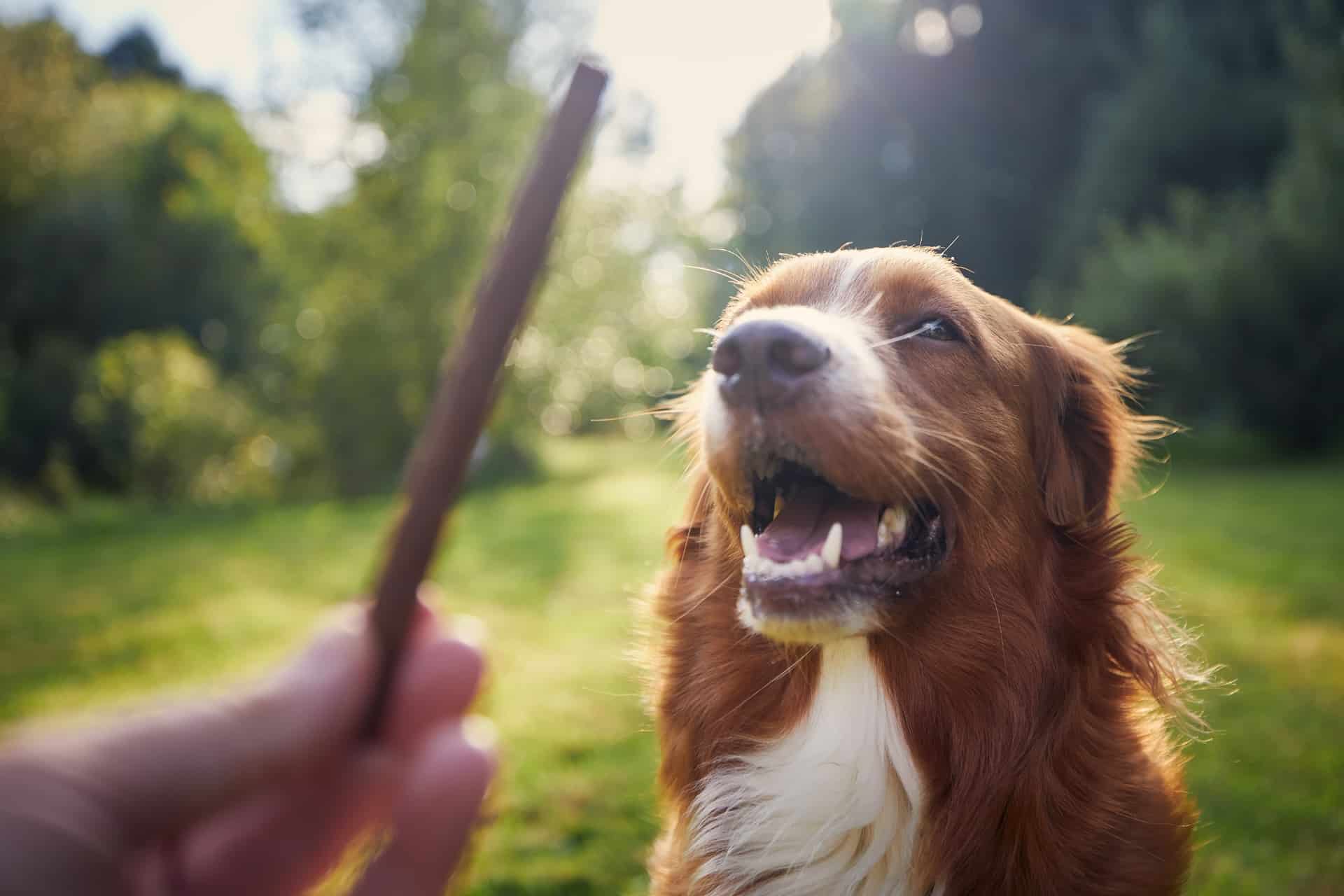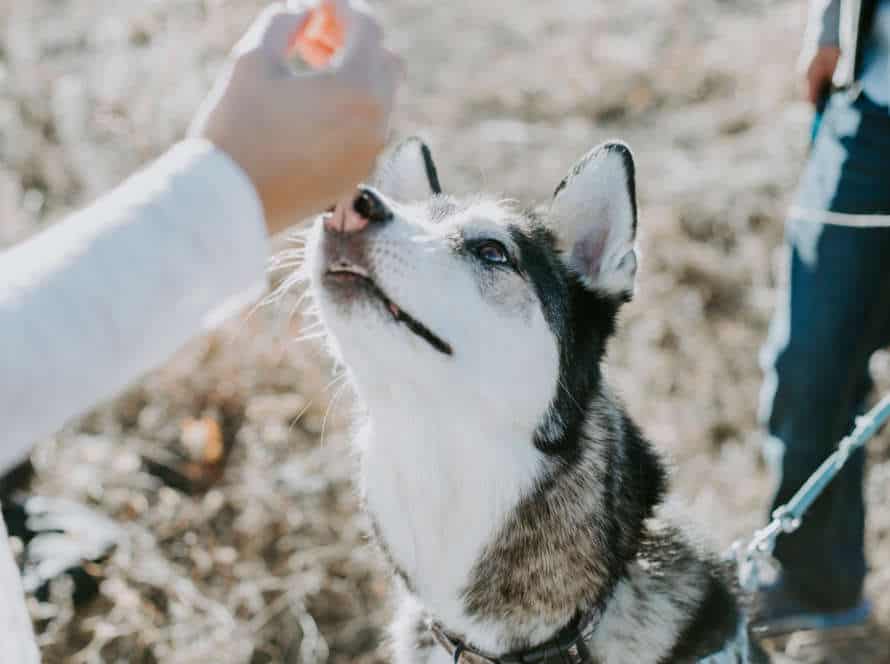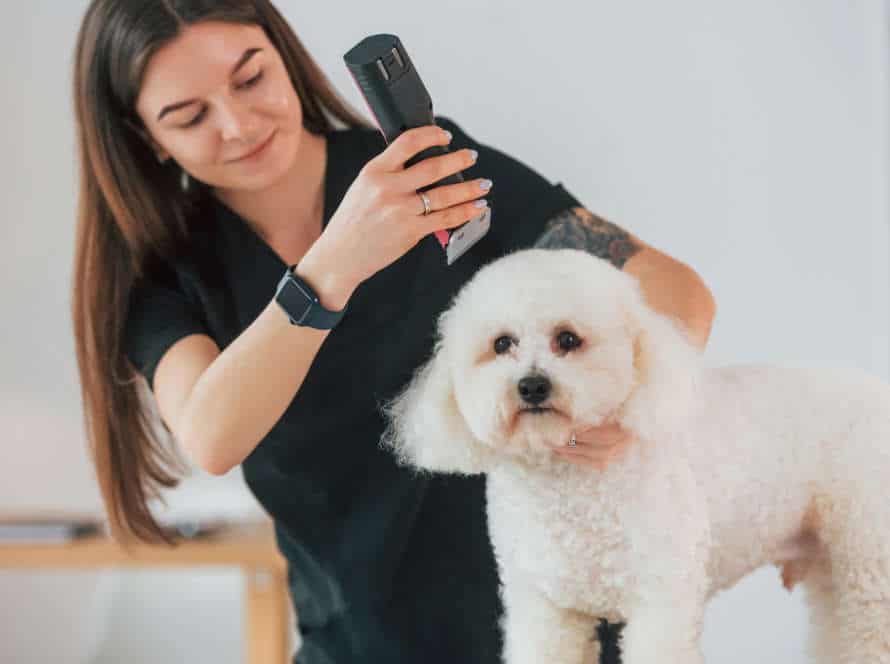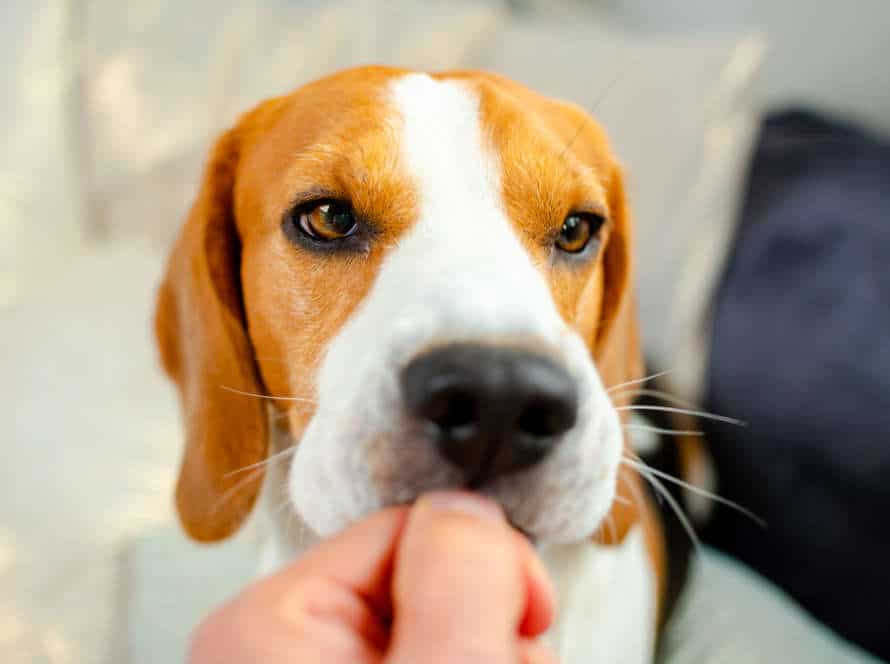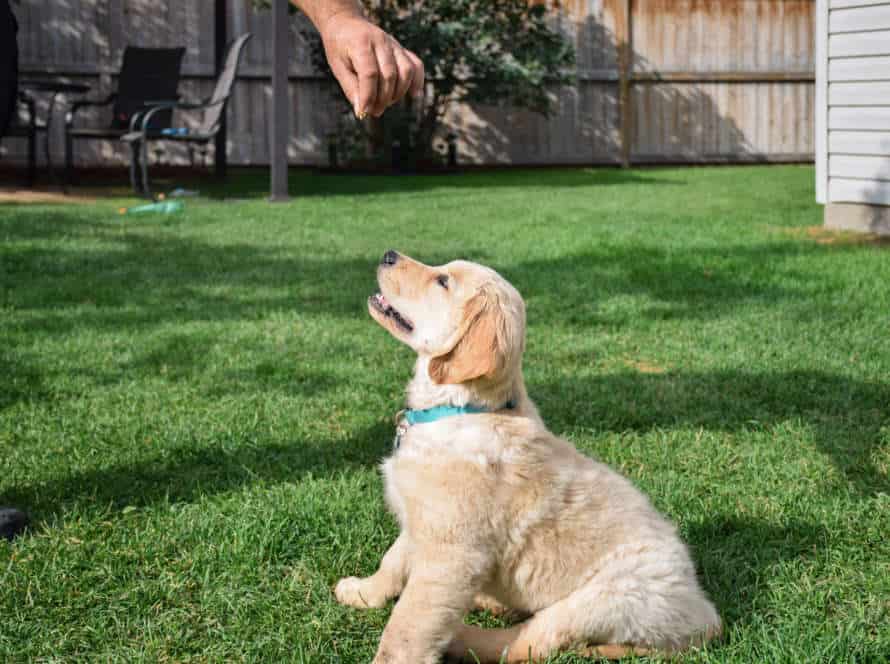Positive Reinforcement Techniques to Strengthen Your Dog’s Skills
Positive reinforcement is key for teaching your dog skills and bettering their behavior. Here are a few techniques you can use at home to reward good behavior and cultivate a strong bond with your pup:
- Treats – give your pup a treat they love when they do something you want, like stay or sit when asked.
- Verbal praise and affection – use a cheerful voice and physical affection like petting or belly rubs to reward them for good behavior.
- Clicker Training – train your pet to link a clicking sound with a reward, giving a click and treat for each positive action.
Remember, these positive reinforcement techniques will not just help your pet learn, but also create a strong connection with you.
Understanding Positive Reinforcement
Positive reinforcement can boost your pup’s abilities. Reward a behavior and it’ll happen again! You can use positive reinforcement in many situations such as housebreaking, obedience, and tricks.
It’s crucial to comprehend the basics of positive reinforcement for any winning dog training plan.
Definition and explanation of positive reinforcement in dog training
Positive reinforcement is a way of teaching dogs. It uses positive stimuli to reward good behavior. The aim is to make the wanted behavior more likely to happen again.
To use positive reinforcement when training dogs, first work out what you want to encourage. Then, give the dog something they like – treats, toys or praise. When the dog does the behavior you want, give them the reward straight away.
Examples of positive reinforcement include giving treats when a dog sits, praising them when they come when you call, or giving them a toy when they bring you something. Positive reinforcement is a kind way to train dogs. It strengthens their skills and helps your relationship with them.
Importance of using positive reinforcement techniques in dog training
Using positive reinforcement for training dogs is essential. It builds trust and respect between the dog and human.
Positive reinforcement works by awarding good behavior, which encourages the dog to repeat it.
Here are some positive reinforcement techniques:
- Treats: Use small, yummy treats to reward good behavior.
- Praise: Say affirming words like “good boy/girl” or “well done” to praise your dog.
- Playtime: Reward good behavior with playtime – fetch or tug-of-war.
Positive reinforcement is not only more humane and effective than punishing-based training, but it also leads to a happier relationship with your pup!
Comparison of positive reinforcement vs. punishment-based training techniques
Positive reinforcement & punishment-based training are two common techniques for dogs.
- Positive reinforcement involves rewarding desired behaviors with treats or praise. This strengthens the bond between the dog and owner, plus it’s effective.
- Punishment-based training uses scolding or punishing the dog for undesired behavior. This can yield quick results, but can also lead to fear and anxiety, damaging the relationship.
Positive reinforcement is more effective, without the risks of fear and anxiety.
Pro tip: Be consistent and reward good behavior instead of punishing bad behavior.
Positive Reinforcement Techniques
Positive reinforcement is a great way to teach your pup. If your dog does something good, give them a reward! This can help build new habits and get rid of bad ones. Here’s a few techniques to make training easier:
- First, give rewards when your dog does something you want. This encourages them to do it again.
- Next, stay consistent with your rewards.
- Finally, offer treats that your pup loves!
Positive reinforcement works like a charm.
Clicker Training
Clicker training is a way to teach dogs with rewards, not punishments. It’s an effective way to make your pup better and to promote good behavior. Here’s how to get started:
- Get a clicker and some yummy treats.
- Click the clicker and give your dog a treat. This connects the click to the reward.
- Choose a simple thing your dog knows and wait for them to do it. When they do, click and give them a treat.
- Practice this, getting harder and harder until your dog gets it.
- Use the clicker and treats to reward right actions and stop wrong ones. Remember to reward good deeds and not punish bad ones.
Pro tip: Be consistent with clicker training. Start with short sessions, then increase the length and difficulty. This will keep your pup interested and motivated.
Explanation of clicker training and how it works
Clicker training is a form of positive reinforcement. It uses a clicker, a small device that makes a clicking noise when pressed. This sound signals to the dog that they have done something good. They are then rewarded with a treat or praise.
The clicker “marks” the desired activity. This helps the dog understand what they should do. When they do it again, they will get the reward.
This training method is good since it focuses on rewarding the dog for good behavior. It also makes it fun and interactive to bond with your pet. This will help them be obedient and have better behavior.
Types of behaviors that can be trained with clicker training
Clicker training is a type of positive reinforcement that is great for helping dog owners train their pup. It can be used to teach two types of behaviors: basic obedience and complex tricks.
When teaching basic commands, like “sit,” “stay,” “come,” and “heel,” the clicker sound is used as a marker for the desired behavior. Whenever your pup hears the clicker, they get a tasty treat or affection.
This technique can also be used to teach complex behaviors, like tricks and agility skills. By using the clicker to capture the exact moment the dog performs the desired action, it’s easier to reinforce and repeat in the future.
Pro tip: Clicker training strengthens the bond between dog and owner. Use positive reinforcement only; never punish your pup for unwanted behavior.
Step-by-step guide to using clicker training with your dog
Clicker training is a way to teach dogs new skills with positive reinforcement. Here are three easy steps to get started:
- Gather supplies. You’ll need a clicker, treats, and a willing pup. Pick a space with no distractions.
- Charge the clicker. Click the clicker and give your dog a treat. Do this multiple times so they learn the clicker = treat.
- Start training. Select a behavior you want to teach them. As soon as they do it, click and treat. Do this until they do the behavior on command.
Clicker training is an awesome tool to communicate with your pup and strengthen your bond. Try it out and see the results!
Treat-Based Training
Treat-based training is a good way to teach your pup. Use rewards to encourage positive behaviour and make it more likely to be repeated. Here are some tips:
- Choose a treat your dog loves, just for training.
- Start small and increase the difficulty level as your pup learns.
- Reward them immediately after they do the desired action.
- Praise them with words and a treat.
- Vary the timing and type of rewards. Keep them engaged and motivated.
Pro tip: Decrease the treats as your dog gets better at the command, so they don’t rely on them.
Explanation of treat-based training and how it works
Treat-based training is a reinforcement technique to help canines learn new skills and behaviors. By giving rewards, like meat or a biscuit, when they do something correct, dogs learn quickly that they will be rewarded. This encourages them to repeat the behavior.
It is a humane way to train and builds a strong bond between the owner and the dog. To use this method, break the behavior into steps, reward the dog for each step, and gradually increase the difficulty. Consistency is key to success with treat-based training.
Types of treats to use for training and when to give them
Treats are great for positive reinforcement dog training. But, not all treats are the same. Let’s look at two types of treats and when to use them.
High-value treats: These treats are your dog’s favourites, like chicken, cheese and hot dogs. High-value treats are awesome for teaching new skills and behaviors. They are also helpful when your dog is distracted or in a noisy environment. Plus, they can be used to reinforce good behavior.
Low-value treats: These include kibble and dry biscuits. Low-value treats are great for reinforcing already-learned behavior. They help keep good habits going by giving small rewards for good behavior. They are also great for activities that need a lot of repetition.
Remember to give treats at the right time and in the correct amount. This will help reinforce results and ensure good behavior.
Examples of behaviors that can be trained with treat-based training
Treat-based training is a powerful technique to reward good behaviour in dogs. Here are three examples of trainable behaviours with this method:
- Sit: Get a treat. Hold it above their head. Move it back towards their tail. They will sit. Give them the treat.
- Stay: Get them to sit. Hold a treat in front of their nose. Say “Stay.” Step back, then go back and reward if they stayed still. Gradually increase distance and time.
- Recall: Stand a few feet away. Say their name + “Come.” If they come, reward with a treat. Increase distance and distractions. Gradually transition to lower-value treats as they become more skilled.
Verbal Praise and Affection
Verbal praise and affection are simple, yet effective tools for positive reinforcement. Use them to strengthen your dog’s skills!
For verbal praise: use a happy, high-pitched voice when your dog follows a command or exhibits desired behavior. Say “good boy/girl!” or “good sit!”
For affection: pet your pup or give them a belly rub. This rewards them and motivates them to follow commands.
Consistent use of these techniques will help your pup learn faster and make training a positive experience.
Explanation of verbal praise and affection as positive reinforcement
Verbal praise and affection are examples of positive reinforcement. It rewards desirable behaviors in dogs. Positive reinforcement is a reward-based training technique. It encourages a dog to repeat good behavior.
Verbal praise is simple and requires no special skills or equipment. Say “good boy” or “well done” in an enthusiastic tone. This boosts a dog’s confidence and reinforces good behavior.
Affection is another form of positive reinforcement. Pat a dog’s head or rub their belly. This strengthens skills, builds trust and deepens bonds with owners.
Positive reinforcement is a simple and effective way to train your dog. So, reward good behavior with verbal praise or affection!
The importance of timing and tone of voice in verbal praise
Timing and tone of voice are super important when training a dog using positive reinforcement.
Timing needs to be immediate after the desired behavior. Delayed praise can make your pet confused, not understanding the behavior.
Tone of voice is also essential. Dogs understand human emotions and will react to the tone used. An excited, high-pitched tone shows the dog they’ve done something great. Low, stern tones signal bad behavior.
So, use the same tone throughout training. This helps the dog know what’s right and strengthens the skill.
Pro tip: Make the verbal praise sincere and enthusiastic. This makes a big impact on your pup’s behavior.
How to effectively use verbal praise and affection in training
Verbal praise and affection are key tools for dog owners who use positive reinforcement techniques. Here’s how it works:
- Timing matters. Give verbal praise and affection right away when your dog does something good. This helps the good behavior stick.
- Keep it simple. Use short, happy words to show approval. “Good boy!” “Yes, you got it!”
- Stay calm. Speak and act in a calming way when praising your pup. It will help them connect nice behavior to praise.
- Mix it up. Petting, hugging, playing – these are all great ways to show love and reinforce good behavior.
- Be consistent. Dogs do best with routines and repetition, so make sure to give verbal praise and affection consistently.
Follow these tips to effectively use verbal praise and affection as positive reinforcement techniques and help your dog learn.
Incorporating Positive Reinforcement into Training
Teach your dog new tricks with positive reinforcement! It’s a great way to start building trust. Give rewards, compliments, and praise to motivate your pup. This method helps create long-term behavior changes.
Here are some techniques to try out: Positive reinforcement training!
Creating a Positive and Consistent Training Environment
Creating a positive and consistent training environment for your pup is super important. Positive reinforcement is a great way to encourage and strengthen good behavior. Here are some tips:
- Treats: Give healthy, low-calorie treats for good behavior – but not too much!
- Praise: Speak kindly and give physical affection like pets and hugs to show your dog they did something right.
- Clicker Training: Use a clicking sound to signal when your pup does something correctly. This can help with commands such as ‘sit’, ‘stay’, and ‘come’.
- Consistency: Set clear rules and boundaries and stick to them. Reward good behavior and avoid rewarding bad behavior – even if it’s funny.
With patience and practice, positive reinforcement techniques can make your dog’s skills and behavior better. This will lead to a happier relationship between you and your pup!
Setting Goals and Objectives for Your Training Sessions
Setting attainable goals and objectives for your pup’s training sessions is key for success. Here’s how to do it properly:
- Identify the behavior you want to teach or improve.
- Break it into smaller, achievable steps.
- Decide how long each session will be and how often you’ll practice.
- Set a clear goal for success, like a certain number of successful attempts or a precise level of accuracy.
- Employ positive reinforcement techniques, such as treats or compliments, to reward your pup for good behavior.
- Make adjustments to goals and objectives when needed, based on progress and feedback.
- Remember to keep training sessions short, positive, and enjoyable so your pup stays interested and eager to learn.
Monitoring Progress and Making Adjustments to Training Techniques
Checking your pup’s growth and making changes to your teaching techniques is important for including positive reinforcement and strengthening your pup’s talents. Here’s how to watch and alter your training approaches:
- Keep tabs on progress: Set measurable targets and track their progress. Make a logbook of successes and observations to see improvement with time.
- Spot problem areas: Find where your pup is struggling and modify your training techniques accordingly. This might include breaking down difficult activities into smaller, simpler parts, using different signals or prompts, or brainstorming ways to make teaching more interesting.
- Incorporate positive reinforcement: Add positive reinforcement methods like snacks, toys, and compliments when your pup shows progress or does the right thing. This can make your pup feel motivated and help them learn.
- Consistency is essential: Consistency is key in pup training. Use the same signals, rewards, and timing to help your pup understand what you wish.
Remember that each pup is unique, and teaching may take more time for some pups than others. Be patient, stay consistent, and adjust your techniques as needed to help your pup learn and develop.
Training Challenges and Troubleshooting
Positive reinforcement is an essential part of training a pup. It’s an effective way to reinforce good behavior and build skills. Yet when using positive reinforcement, it’s important to keep possible training issues in mind. And plan ahead for any potential obstacles.
This section will talk about the different types of positive reinforcement techniques, their challenges, and how to handle them.
Identifying Common Training Challenges
Training your furry buddy can be tricky. Identifying common problems can make it easier to teach your pup the ropes.
Issues often faced during training include:
- Lack of focus. Maybe your pup is easily distracted, or just not interested.
- Overstimulation. Your dog gets too hyped up, making it hard to control them.
- Inconsistency. Not following a consistent training approach can confuse your pup.
- Fear, shyness, or anxiety. These can stop your pup from learning and following instructions.
To tackle these challenges, use positive reinforcement methods. This will help your pup learn while building a trusting relationship.
Pro tip: Consistency and patience are key. Don’t give up if progress is slow. Always reward your pup for their hard work!
Troubleshooting Techniques for Common Training Challenges
Training a pup is a fulfilling experience, but it comes with some troubles. This piece will discuss some of the common dog training issues and suggest positive reinforcement strategies to aid in tackling them.
Issue 1: Low Motivation
Solution: Hand out a highly valuable treat or toy to stimulate your pup during training. Vary the rewards to keep the pup interested.
Issue 2: Distractions
Solution: Begin training in a peaceful setting and then, gradually, present disruptions. Keep training periods short and consistent to help your pup remain focused.
Issue 3: Fear or Anxiety
Solution: Generate a calming atmosphere for your pup by using soothing scents, sounds and treats. Break down the training into smaller, less daunting steps.
Issue 4: Inconsistency
Solution: Form a regular routine for training sessions and commands. Utilize the same tone and reward system to assist in reinforcing the conduct you want.
By making use of these positive reinforcement techniques, you can bolster your pup’s abilities and overcome the frequent training challenges you might confront.
When to Seek the Help of a Professional Dog Trainer
Owning a dog means knowing when to get help from a pro trainer. Not all dog problems can be sorted out solo, and some need specialized knowledge. Here are signs that it’s time to hire a pro:
- Aggression to people or other animals.
- Lack of response to positive reinforcement and commands.
- Severe anxiety, phobias, and bad behavior patterns.
- If it’s your first time having a dog and you need help.
Training troubles can be tough. A pro can provide the right positive reinforcement for your pup, making sure it’s tailored to their needs and skills, creating a better bond.
Frequently Asked Questions
What is positive reinforcement?
Positive reinforcement is a training technique that involves rewarding desired behavior with something the subject finds pleasurable. In the case of dogs, this could be a treat, verbal praise, or physical affection.
What are some examples of positive reinforcement?
Examples of positive reinforcement in dog training include giving treats for good behavior, providing verbal praise, and using toys or playtime as rewards. The key is to use something the dog finds rewarding in order to encourage desired behavior.
Why is positive reinforcement important?
Positive reinforcement is important because it helps to build a positive relationship between the dog and the handler. By using rewards to encourage good behavior, the dog will be more eager to please and will develop a stronger bond with its owner.
What are some tips for using positive reinforcement effectively?
Some tips for using positive reinforcement effectively include being consistent in your rewards, timing your rewards to immediately follow the desired behavior, and gradually reducing the frequency of rewards over time as the behavior becomes more ingrained.
Are there any potential drawbacks to using positive reinforcement?
One potential drawback to using positive reinforcement exclusively is that some dogs may become overly dependent on rewards in order to perform desired behaviors. Additionally, if rewards are not gradually phased out, the dog may begin to expect them for every action and will lose its motivation to perform without them.

